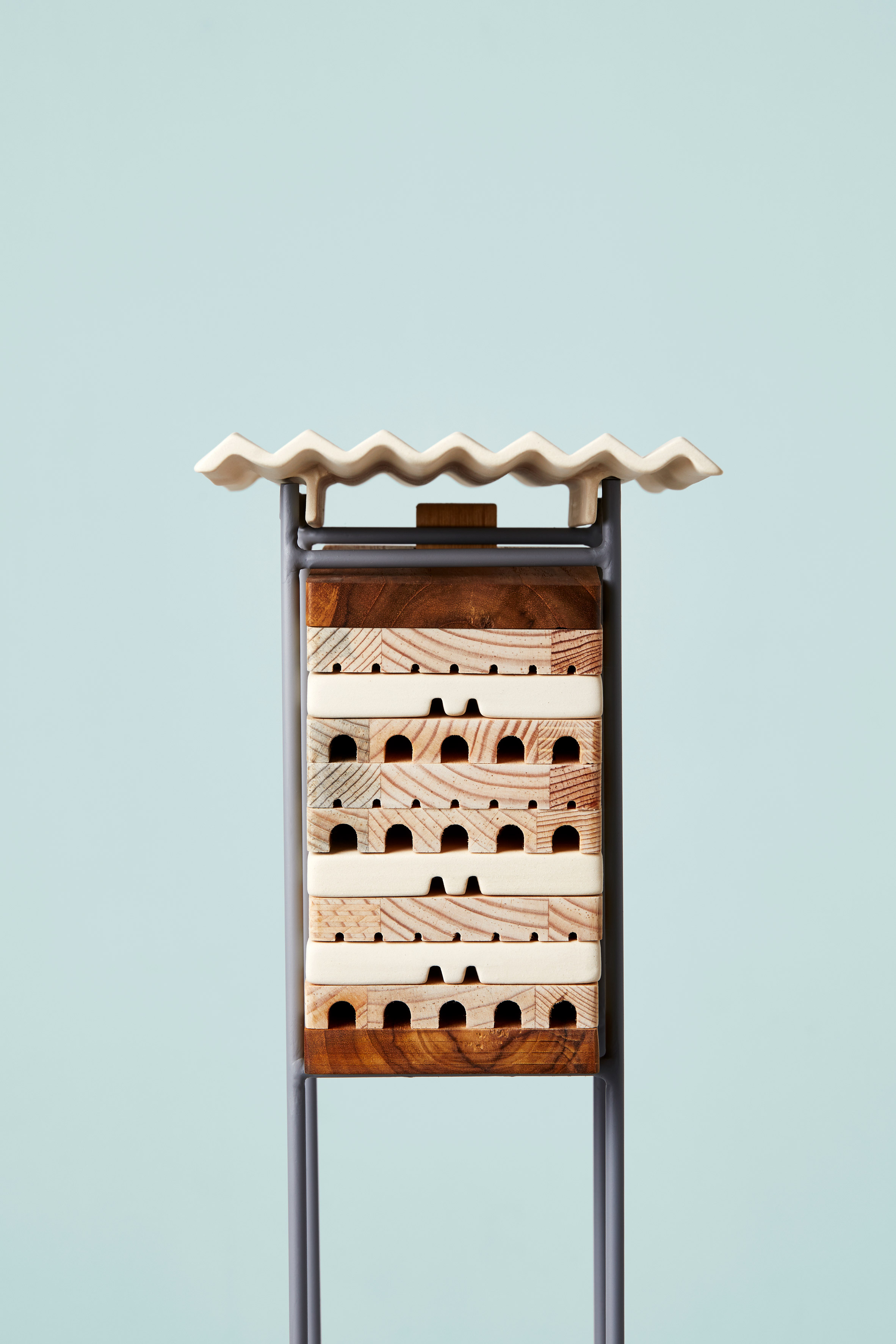Refugio shelters aim to make solitary bees feel at home in cities

Mexico-based creative studio MaliArts has designed a series of three structures for solitary bees living in built-up areas to help welcome nature into urban environments.
The project, called Refugio, is conceived as a group of three objects that provide the basic needs of shelter, food and water to different species of solitary bees, in a bid to generate a closer relationship between human-centric cities and nature.
A shelter is designed to function as both a resting place and a nesting place, while a waterer provides a safe space to drink, and a feeder contains food, for areas without enough flowers.
The Refugio project includes a shelter for solitary bees
Solitary bees do not live in colonies or in a hive, do not have a queen and therefore do not produce honey or wax. Most are not aggressive and many don't even have a sting. Dedicating most of their time to collecting pollen, solitary bees are potentially the most efficient pollinators in nature, with one particular species of solitary bee, the red mason, being equivalent to 120 worker honeybees in the pollination it provides.
One of the structures in MaliArts' collection is a feeder
"When we talk about bees we usually imagine the European honey bee (Apis mellifera) when in reality around 90 per cent of the bee species are considered solitary," explained Gabriel Calvillo from the Mexico City-based studio.
"The fact that solitary bees do not generate any 'consumable product' for humans has meant that they ...
| -------------------------------- |
| Drone film by Mariana Bisti captures Hong Kong's densely packed high-rise buildings |
|
|
Villa M by Pierattelli Architetture Modernizes 1950s Florence Estate
31-10-2024 07:22 - (
Architecture )
Kent Avenue Penthouse Merges Industrial and Minimalist Styles
31-10-2024 07:22 - (
Architecture )






